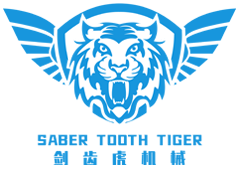-
Transform Your Manufacturing Process: The Ultimate Guide to CNC Busbar Cutting and Punching Machines
Transform Your Manufacturing Process: The Ultimate Guide to CNC Busbar Cutting and Punching Machines Table of Contents 1. Introduction to CNC Busbar Cutting and Punching Machines 2. What is a Busbar? 3. Importance of Efficient Busbar Cutting and Punching 4. Benefits of CNC Busbar Cutting and Punching Machines 5. How CNC Busbar Cutting and Punching Machines Work 6. Key Feat
Transform Your Manufacturing Process: The Ultimate Guide to CNC Busbar Cutting and Punching Machines
Table of Contents
- 1. Introduction to CNC Busbar Cutting and Punching Machines
- 2. What is a Busbar?
- 3. Importance of Efficient Busbar Cutting and Punching
- 4. Benefits of CNC Busbar Cutting and Punching Machines
- 5. How CNC Busbar Cutting and Punching Machines Work
- 6. Key Features to Consider When Choosing a CNC Busbar Machine
- 7. Applications of CNC Busbar Cutting and Punching Machines in Manufacturing
- 8. Maintenance and Upkeep of CNC Busbar Machines
- 9. The Future of Busbar Technology and CNC Automation
- 10. Conclusion
- 11. Frequently Asked Questions
1. Introduction to CNC Busbar Cutting and Punching Machines
In the fast-evolving landscape of manufacturing, efficiency and precision are paramount. Industries are increasingly turning to advanced technologies to meet the demands of modern production. **CNC busbar cutting and punching machines** are revolutionizing the way manufacturers handle metallic busbars, ensuring not only speed but also accuracy in the cutting and shaping processes. This article delves deep into the world of CNC busbar machines, exploring their significance, functionality, and transformative impact on manufacturing processes.
2. What is a Busbar?
A **busbar** is a conductive material, typically made of copper or aluminum, used to distribute electrical power within electrical substations, switchgears, and various distribution panels. Unlike traditional wiring methods, busbars offer several advantages, including reduced resistance, improved space utilization, and overall enhanced electrical efficiency. The demand for customized busbars in various shapes and sizes has led to the necessity of specialized cutting and punching solutions.
3. Importance of Efficient Busbar Cutting and Punching
The **importance of precise busbar cutting and punching** cannot be overstated. Inaccuracies in these processes can result in poor electrical performance and increased costs. Efficient cutting and punching not only enhance the quality of the end product but also minimize waste, thus contributing to cost savings. As industries move towards more automated solutions, the role of CNC machines in ensuring precision and efficiency becomes ever more critical.
4. Benefits of CNC Busbar Cutting and Punching Machines
CNC busbar cutting and punching machines bring a plethora of advantages to the manufacturing process:
4.1 Enhanced Precision
CNC technology enables precise measurements and adjustments, ensuring that each cut is exactly where it needs to be. This level of **accuracy** greatly reduces the chances of errors and rework.
4.2 Increased Production Speed
Speed is of the essence in manufacturing. **CNC machines** can operate continuously with minimal downtime, significantly increasing output and productivity.
4.3 Customization Capabilities
With CNC machines, it is easier to produce custom designs tailored to specific requirements. This capability is invaluable in industries where unique specifications are commonplace.
4.4 Improved Safety
Automating the cutting and punching processes reduces the risk of workplace injuries associated with manual operations.
4.5 Cost-Effectiveness
While the initial investment in CNC busbar machines may be higher, the long-term savings achieved through reduced waste and increased efficiency make them a cost-effective solution.
5. How CNC Busbar Cutting and Punching Machines Work
Understanding the operation of CNC busbar cutting and punching machines is crucial for manufacturers looking to optimize their processes.
5.1 Computer Numerical Control (CNC) Technology
At the heart of CNC machines is the **Computer Numerical Control (CNC)** technology, which translates design specifications into machine movements. This precision is achieved through the use of advanced software that dictates the machine's actions based on pre-programmed instructions.
5.2 Cutting and Punching Mechanisms
CNC busbar machines utilize various cutting and punching mechanisms, such as laser cutting, hydraulic punching, and plasma cutting, to achieve the desired shapes. Each method presents unique advantages, and the choice often depends on the specific requirements of the project.
5.3 Integration with CAD Software
CNC machines can be seamlessly integrated with **Computer-Aided Design (CAD)** software, allowing for easy modifications and enhancements to designs. This integration streamlines the entire production process, reducing lead times and increasing design flexibility.
6. Key Features to Consider When Choosing a CNC Busbar Machine
Selecting the right CNC busbar cutting and punching machine involves assessing several key features:
6.1 Size and Capacity
The machine's size must accommodate the dimensions of the busbars you intend to process. Ensure that the capacity aligns with your production volume needs.
6.2 Cutting Speed and Precision
Evaluate the machine's cutting speed and precision levels. High-speed machines with tight tolerances are ideal for large-scale production.
6.3 Material Compatibility
Different machines come with varying capabilities regarding the types of materials they can handle. Ensure compatibility with the materials you use, whether it's copper, aluminum, or other alloys.
6.4 User Interface and Software
A user-friendly interface and advanced software features will ease the operator's learning curve and enhance overall productivity.
6.5 Maintenance Requirements
Consider the maintenance needs of the machine, including accessibility of parts and service support from the manufacturer.
7. Applications of CNC Busbar Cutting and Punching Machines in Manufacturing
CNC busbar cutting and punching machines find applications across various sectors, including:
7.1 Electrical Panel Manufacturing
In electrical panel manufacturing, precision-cut busbars are essential for efficient power distribution and safety.
7.2 Renewable Energy Solutions
The renewable energy sector, especially solar and wind, utilizes busbars for efficient power management and distribution.
7.3 Transportation Industry
In the automotive and aerospace industries, busbars play a vital role in power distribution systems, requiring precise cutting and shaping for optimal performance.
7.4 Industrial Automation
As automation continues to rise, the need for reliable busbars in machinery and robotics becomes critical, prompting the adoption of CNC busbar machines.
8. Maintenance and Upkeep of CNC Busbar Machines
Proper maintenance is fundamental to ensure the longevity and efficiency of CNC busbar machines.
8.1 Regular Inspections
Conduct regular inspections to identify any potential issues before they escalate. This includes checking for wear and tear on cutting blades and components.
8.2 Software Updates
Keep the machine's software up to date to ensure it operates at peak performance and incorporates the latest features.
8.3 Cleaning and Lubrication
Regular cleaning and lubrication help maintain smooth operation and prevent dust or debris from affecting performance.
8.4 Operator Training
Invest in training for operators to ensure they are familiar with the machine’s functions and maintenance needs.
9. The Future of Busbar Technology and CNC Automation
The future of busbar technology is intertwined with advancements in CNC automation. Emerging trends include:
9.1 Smart Manufacturing
The integration of IoT (Internet of Things) technologies will lead to smarter machines capable of self-diagnosis and predictive maintenance.
9.2 Greater Automation
As manufacturers strive for higher efficiency, the trend towards greater automation in the cutting and punching processes is set to continue.
9.3 Eco-Friendly Solutions
The shift towards sustainable practices will drive innovation in materials and processes, with a focus on reducing waste and energy consumption.
10. Conclusion
CNC busbar cutting and punching machines are pivotal in transforming manufacturing processes, offering a unique blend of precision, efficiency, and customization. By investing in these advanced technologies, manufacturers can significantly enhance their production capabilities and remain competitive in an ever-evolving market. As we move towards a more automated and smart manufacturing future, understanding the features, benefits, and applications of CNC busbar machines will empower businesses to make informed decisions.
11. Frequently Asked Questions
1. What materials can be used with CNC busbar cutting machines?
CNC busbar cutting machines can typically handle copper, aluminum, and other conductive materials used in busbar manufacturing.
2. How does CNC technology improve manufacturing processes?
CNC technology enhances precision, speed, and efficiency in manufacturing, leading to reduced waste and improved product quality.
3. What industries benefit from CNC busbar cutting machines?
Industries such as electrical manufacturing, renewable energy, transportation, and industrial automation primarily benefit from CNC busbar cutting machines.
4. What maintenance is required for CNC busbar machines?
Regular inspections, software updates, cleaning, lubrication, and operator training are crucial for maintaining CNC busbar machines.
5. Are CNC busbar machines suitable for small-scale production?
Yes, CNC busbar machines can be tailored to suit both large-scale and small-scale production needs, depending on the model and specifications.
By embracing the capabilities of CNC busbar cutting and punching machines, we empower manufacturers to achieve greater operational efficiency and product excellence.
Related news




